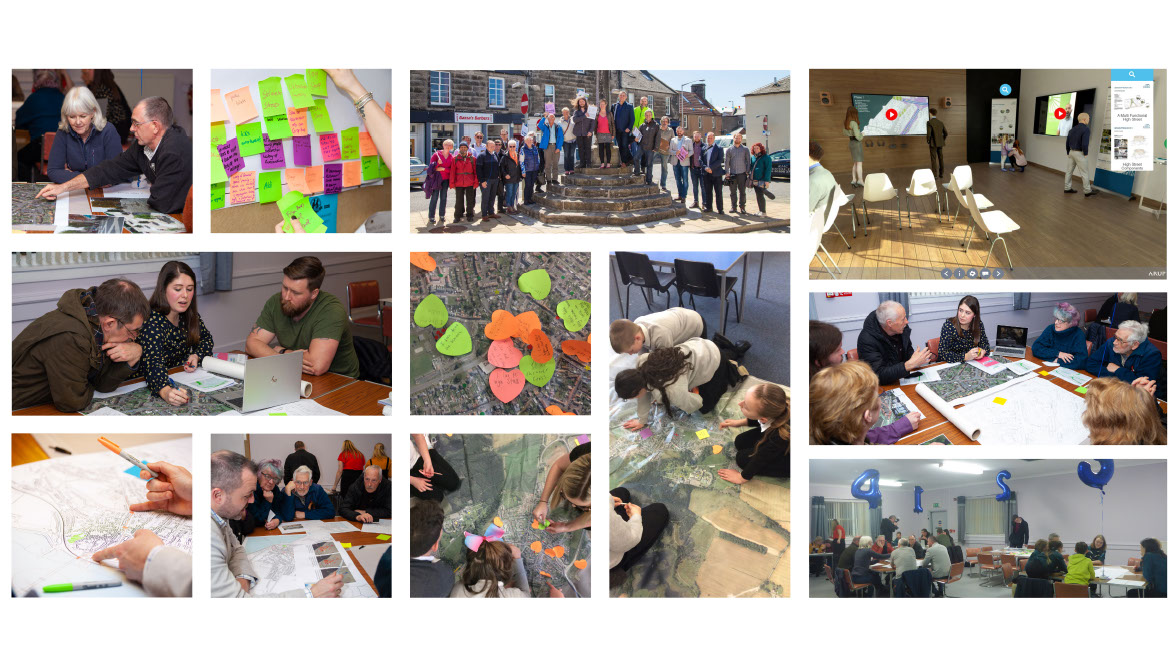Tuesday Sharing Sessions

As an outcome to our annual study tours, our team collaborates to set the direction for our structured learning and…
As an outcome to our annual study tours, our team collaborates to set the direction for our structured learning and CPDS for the upcoming year. One of the key outcomes of this planning is our monthly Tuesday Sharing Sessions (TSS)—a space where we come together to share insights, discuss emerging topics, and build on our collective knowledge. While the name TSS works for now, we’re always open to more creative suggestions, so feel free to share your ideas! 💡
These lunch time sessions are an opportunity to share our experiences and specific areas of interest, so we all have a subject to research and present. We also wanted them to be an chance for our less experienced members of the team to hone their presentation skills so we encourage a stand up presentation format and a Q&A session at the end.
Our last series of TSS sessions took place in October 2024, and were a result of the London study tour in 2023. It took some time to set up, but we’re excited to already have our 2025 sessions planned based on the insights we gathered during our trip out to the Netherlands in September 2024.
In 2024, we explored a diverse range of topics, including:
- Collaboration between Consultants
- Storytelling & Public Art
- Future-Proofing Design
- Public vs. Private Space
- Mitigating Risk in Play
These sessions are an essential part of our team’s ongoing development and growth, and we’re excited for the learning ahead. With that in mind, let’s dive into the key topics we covered in our 2024 sessions. Here’s a brief overview of the subjects that sparked insightful discussions and inspired our team’s learning:
Collaboration between Consultants:
We encourage open dialogue with our design team members, where hand-drawn sketches are embraced as a valuable tool for communication. These sketches facilitate quick, effective discussions and allow ideas to evolve rapidly before formalizing them with computer-aided drawings. As a design based practice, the ability to communicate our proposals and early innovative ideas is fundamental to both project progress and, ultimately, our success and fulfillment in delivering impactful results.
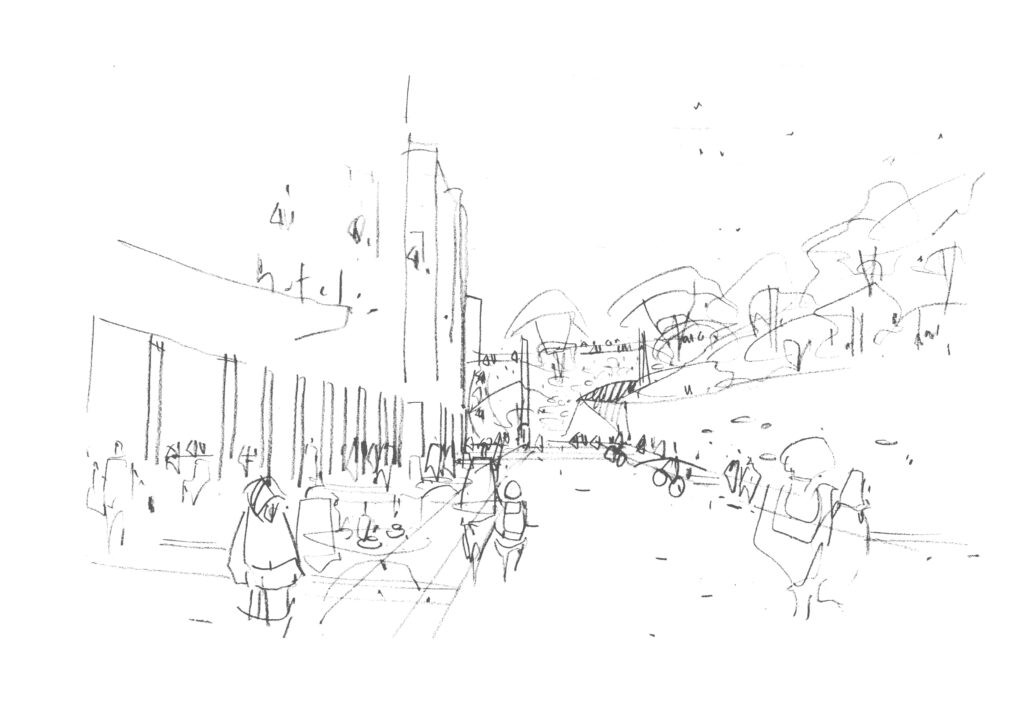
Storytelling and Public Art:
At HarrisonStevens, we take a narrative-driven approach to all our public realm projects, telling a narrative through the landscape and responding creatively to the site’s historical and social heritage. Examples such as Holryrood North, Kings Stables Road, Engine Yard, and Three Queens Square all illustrate this storytelling approach. We believe that weaving a narrative into our proposals makes it easier to communicate, the proposals become more understandable and relatable. This narrative also helps in defending the scheme against the inevitable cost pressures, as it clarifies what’s important and why.
Integrated into this approach is the inclusion of public art, which enhances the sense of place, identity and fun. Public Art should not be a last minute intervention and sits best when integrated into the interpretation of the site and the design resolution within the places that are created.
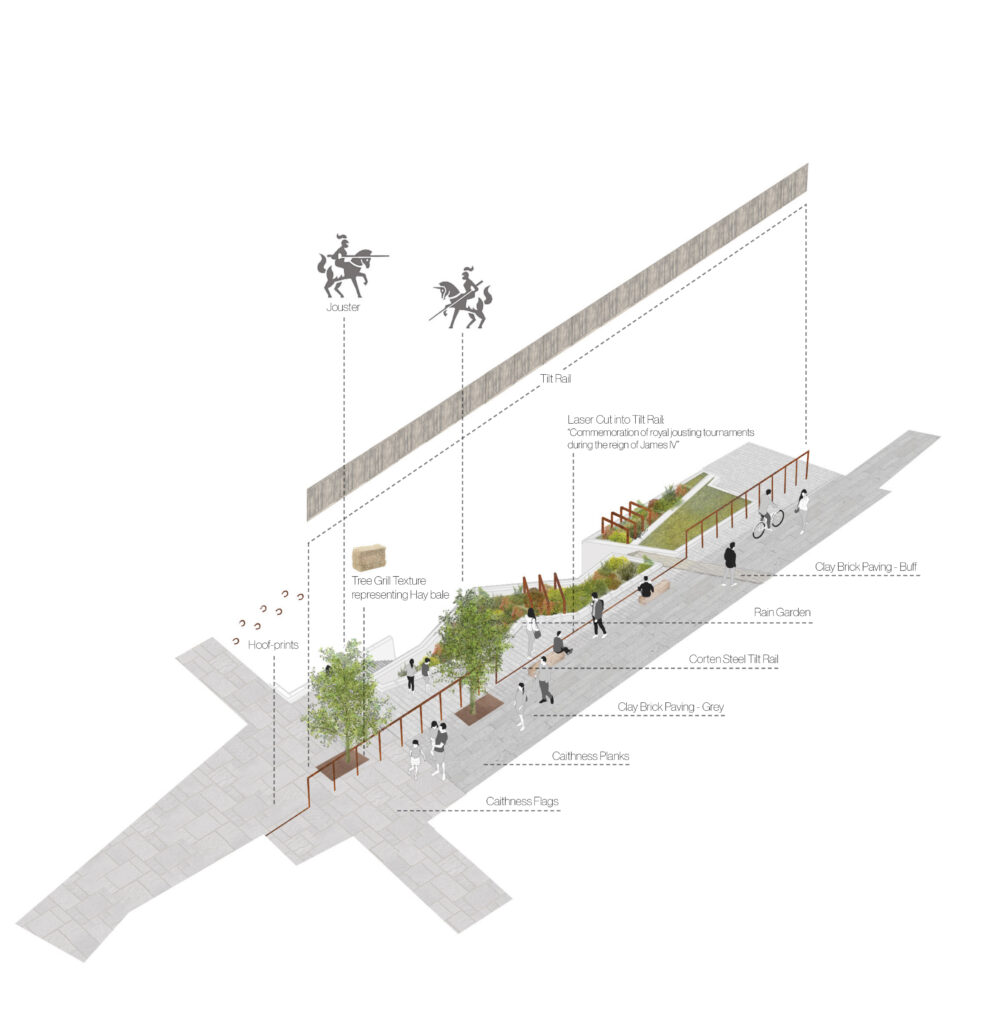
Future Proofing Design:
How can we ensure that the landscapes we create are cared for in a way that encourages healthy growth and sustainability for future generations?
The greats of landscape design considered the long term, whether that be the grand boulevards of Capability Brown or the rolling romantic landscapes and follies of Humphry Repton. These were the long term visionaries, we too need to consider our impact. We live in a more immediate context, our landscapes are often completed with an instant visual impact in mind.
However in a number of our projects we have been fortunate enough to have worked on a Landscape and Habitat Management Plan. Roseburn to Union Canal Link, Inverness Campus, Lost Shore Surf Resort, Fettes College, and Bangour Village, all have a long term plan of maintenance and management over the next 25 years. Securing these long-term plans in contracts is a challenge in itself, but how can we, as landscape architects, ensure the principles are maintained over time? We’ve concluded that a successful long-term strategy starts with three key principles:
- Robust Design: Our landscapes must be resilient, we need to be canny and consider the constraints of local authority and private sector management and knowledge going forward.
- Clear and Concise Guidance: Future plans and maintenance instructions must be straightforward, making it easy for those involved in caring for the landscape to understand and follow them. We need to rely on the guardianship and ownership through the users and/or clients/owners so that without us the landscape can thrive easily and cost effectively. Once there is a sense of stewardship you have one half the battle at least.
- Working with Nature: While no landscape is maintenance-free, we aim to design solutions that work in harmony with natural processes, shaping the future vision for the landscape. We design our solutions to be as self-sufficient as possible requiring minimal human intervention to thrive.

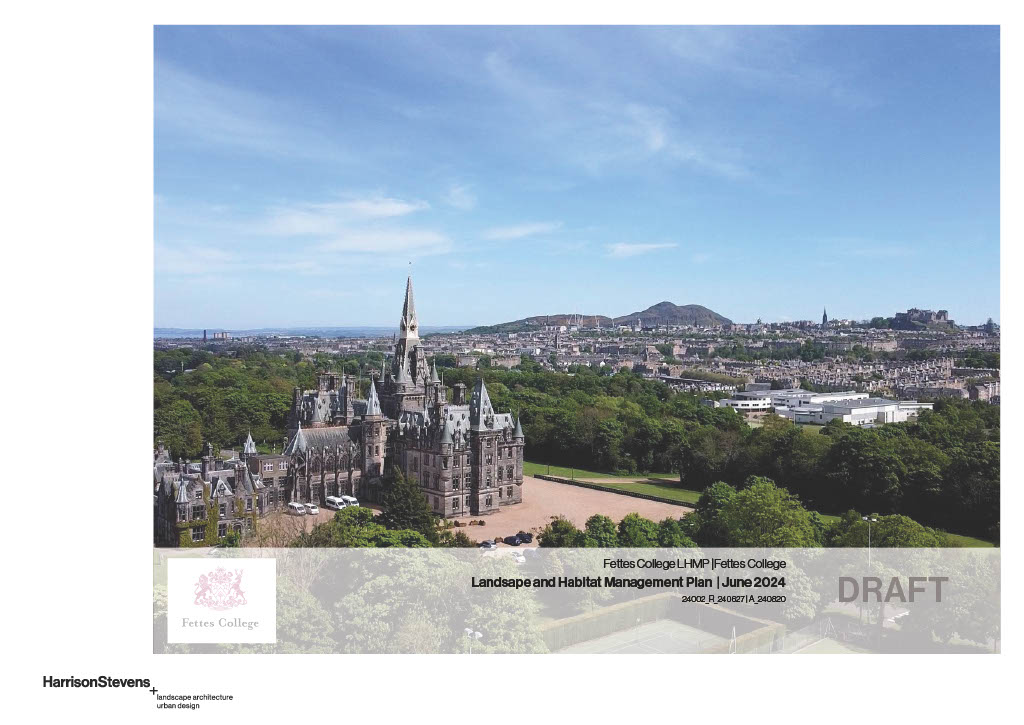
Public Space & Private Space:
In many of the landscapes we visited in London we questioned the definition between public and private space. As a large group of ‘suspicious’ folks taking odd photos of paving patterns and planting mixes, we were often told to ‘move on’ and that ‘this was a private space’. This experience highlighted the growing complexity of public space delivered by private developers, a requirement in many planning processes.
Projects such as the Barbican Estate is perhaps more clear than others, but the NEO Bankside and Battersea Power Station less so. Beautiful landscape and well maintained, perhaps the clue was there all along, enjoyable spaces but delivered by the private sector and managed privately. Landscape proposals must define the public and private and it is a significant consideration. Boundaries are becoming more blurred in cities looking to deliver cohesive public realm and integrating their developments into the urban fabric.
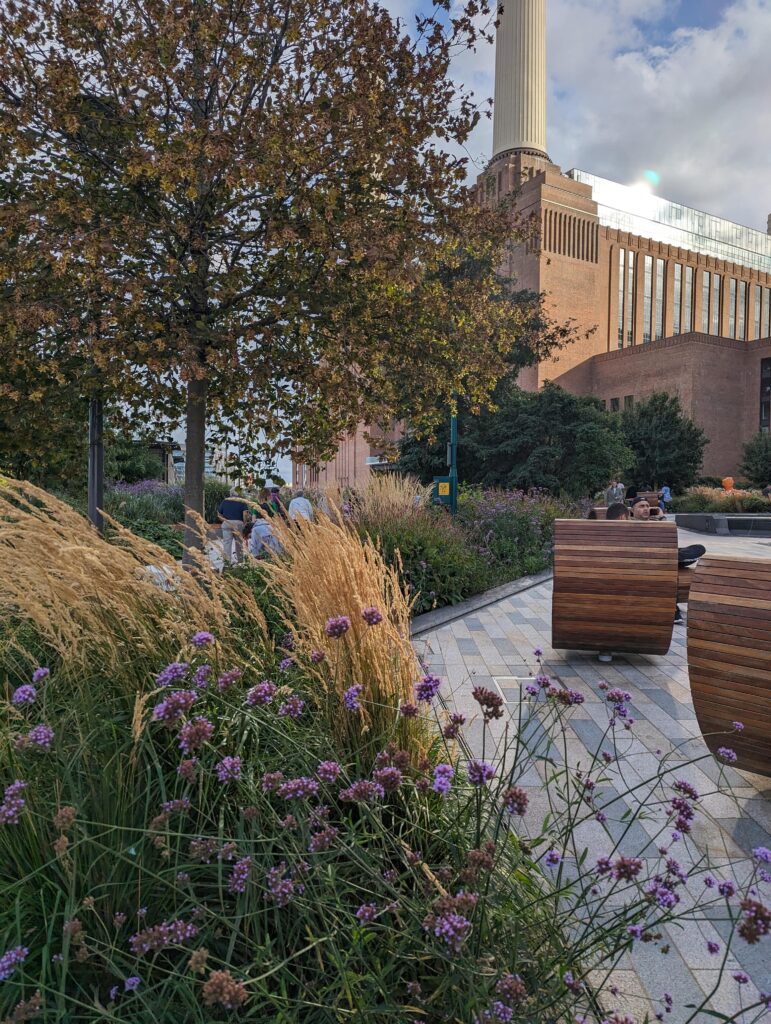
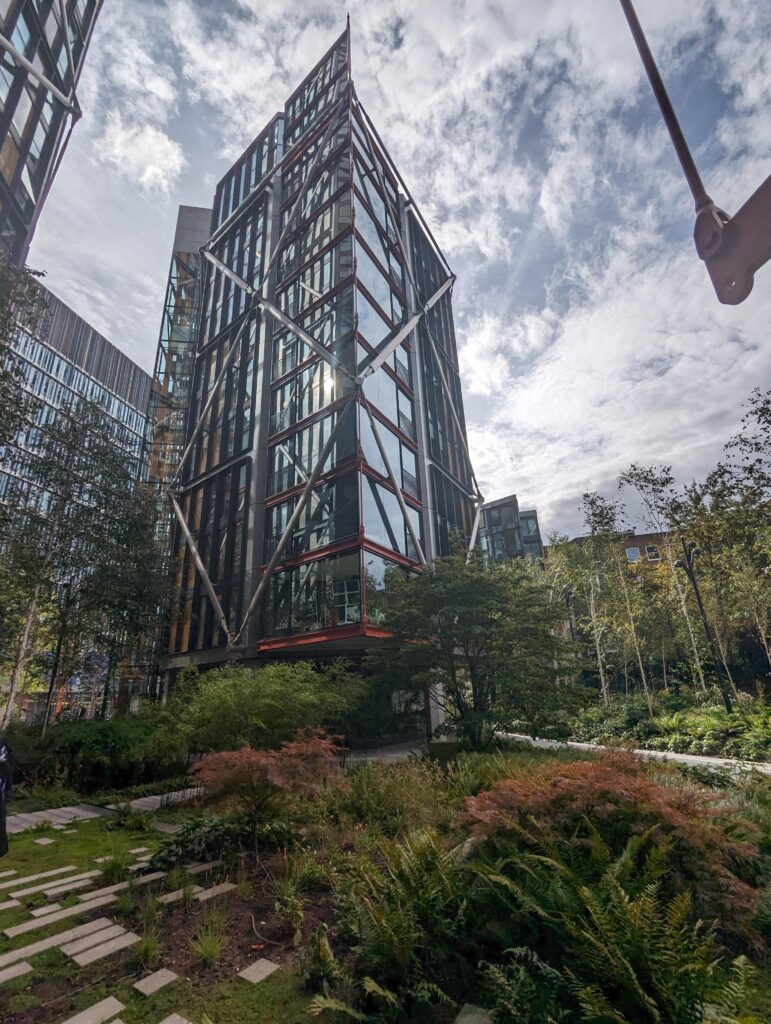
Mitigating Risk in Play:
Our discussions around managing risk in play spaces revolve around striking the right balance: creating spaces that engage and excite, while operating within the parameters of managed risk.
Children play freely along rocky coastlines, in forests and woodlands, up mountains, and along lakes and rivers. In nature there are many actions and conditions which present perceived risks. Natural Play looks to encourage this curiosity and endless imaginative play in the confines of schools and public authority play grounds.
‘Natural Play’ is a loose term often referred to when play spaces directly engage with the topography and naturally occurring materials such as logs, boulders, sand and gravel, to create a playful landscape into which our young people can project their own imaginative games and activities. By removing the bound surfacing and the programmed ‘equipment’ we can slow speeds, increase capacity and facilitate play that is mixed age, mixed gender, interest-led, and which teaches children to take risks safely and to regulate their own behaviour in conversation with the landscape.
With an open mindset we’ll never stop exploring, learning and discovering ways to engage with children through innovative play areas. Prescribing how children play is like sticking a lego creation together with glue. It still has value and will be of interest for a period of time, you may even experiment with the things that form can do, but it misses the joy of limitless combinations of the constituent parts. At HarrisonStevens, we aim to present a canvas of opportunity through which the most creative and imaginative young minds can explore their own adventure and re-invent endless scenarios for themselves.
Insert images
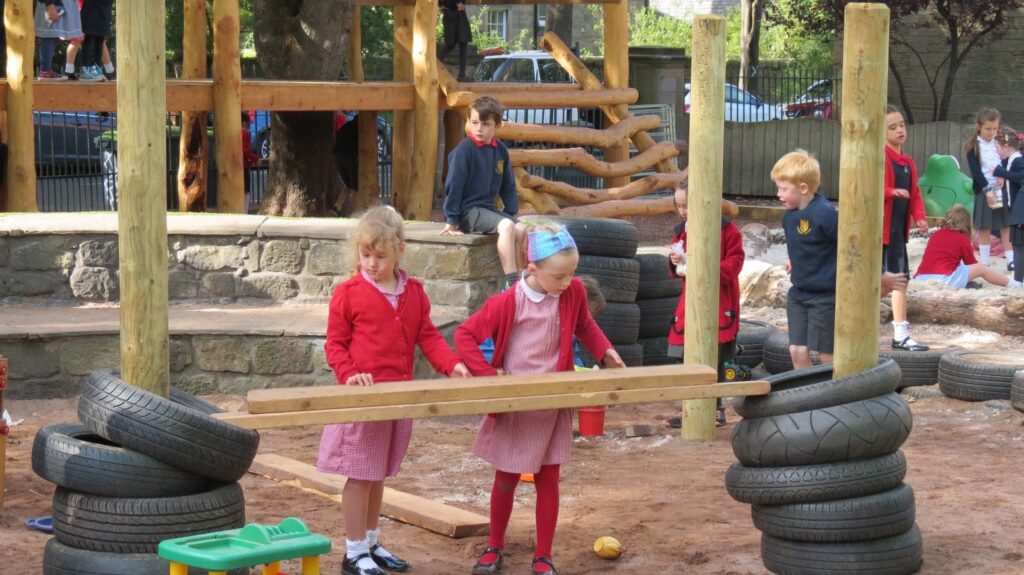
At HarrisonStevens, we are committed to fostering continuous learning and exploration within our team supported by our monthly Tuesday Sharing Sessions (TSS). These sessions, allow us to share our knowledge on key topics such as collaboration, storytelling and the division of public and private spaces.
We are looking forward to starting the new series of sharing sessions inspired from our trip to the Netherlands!

